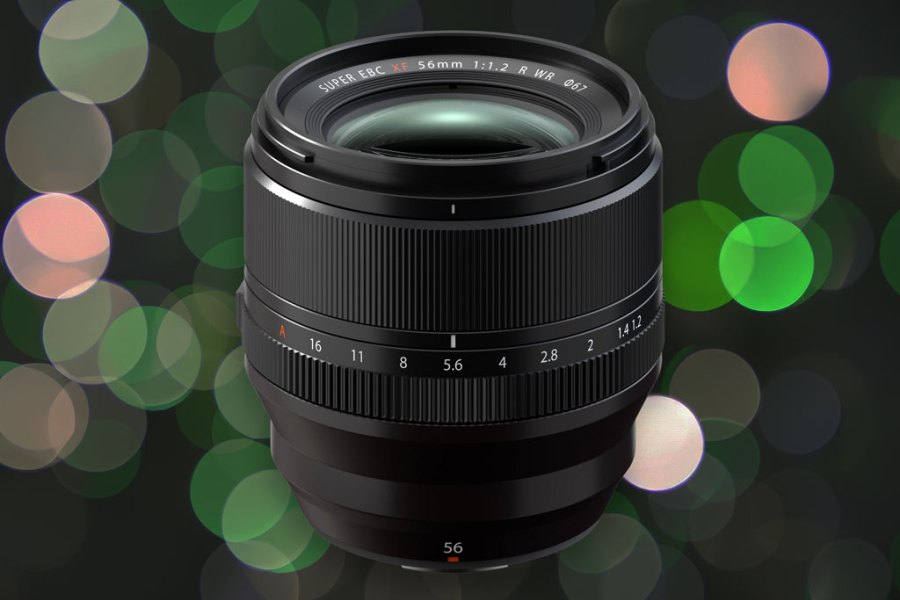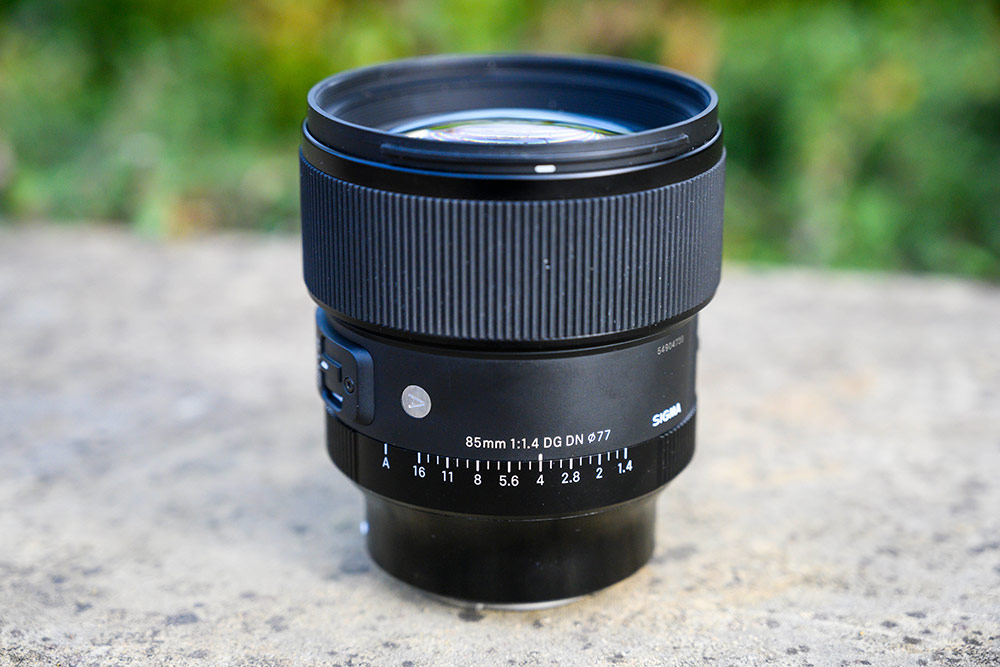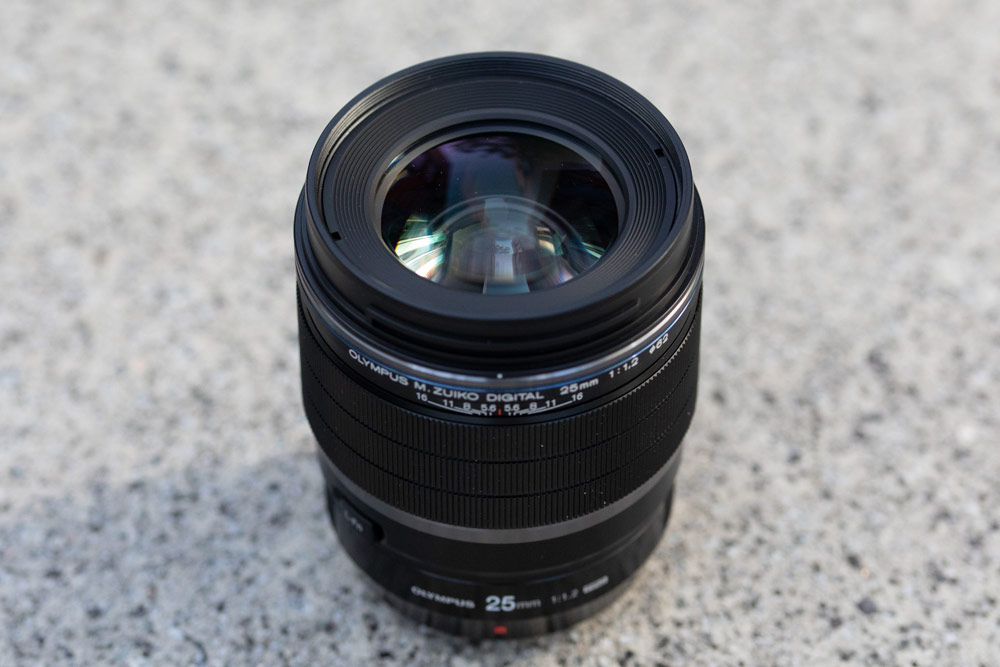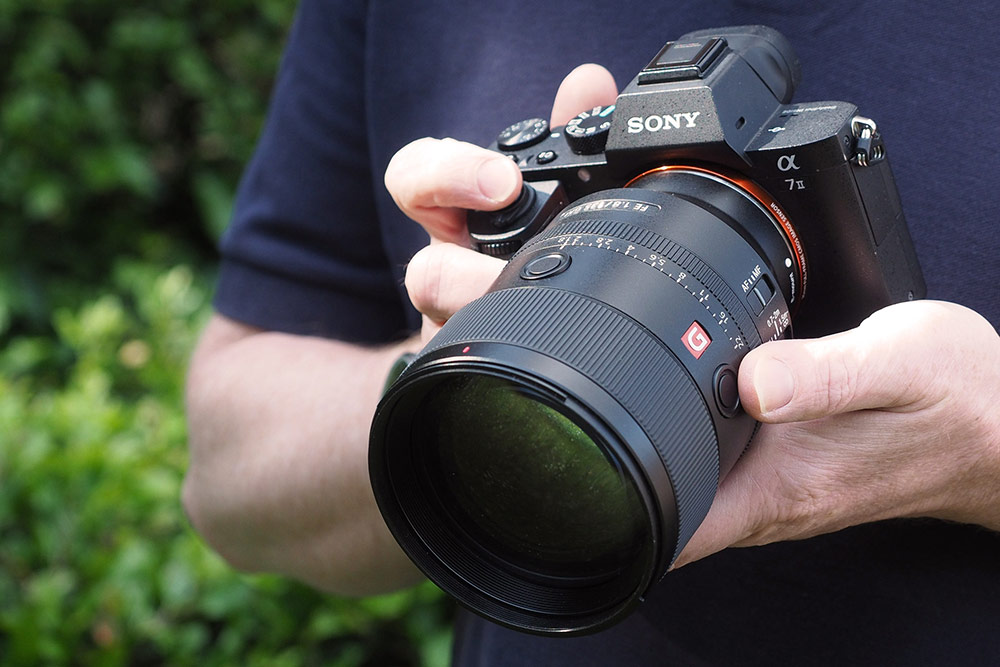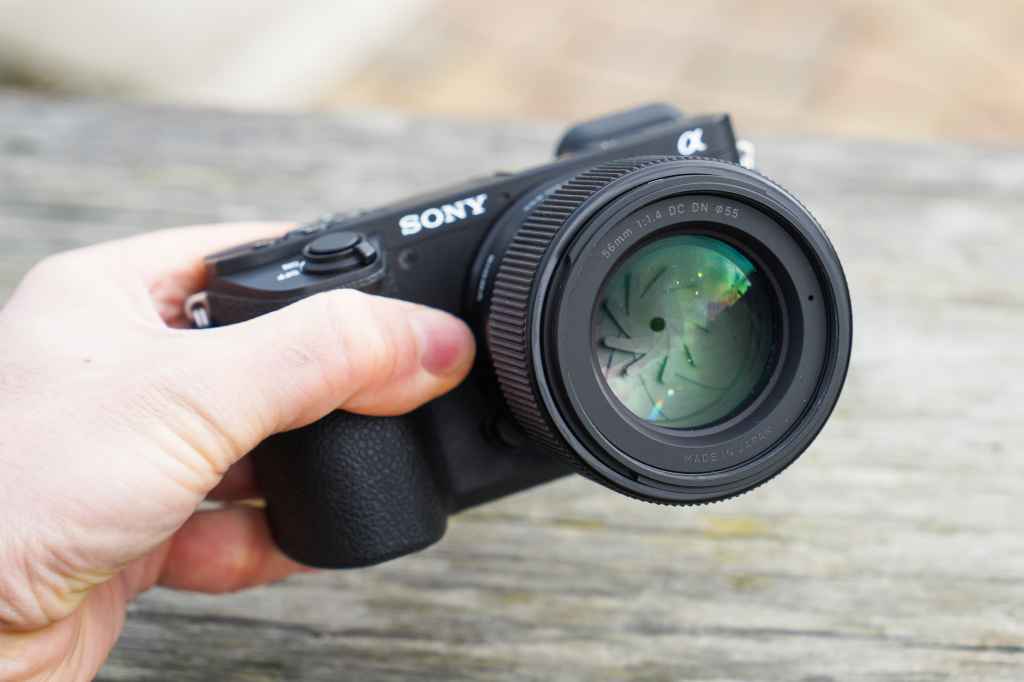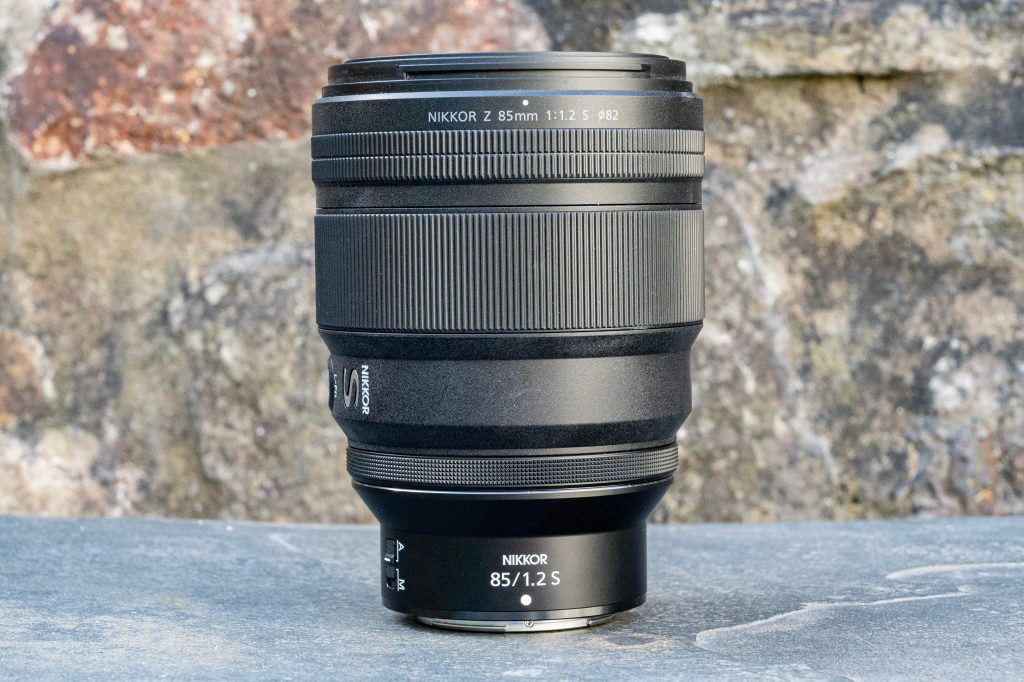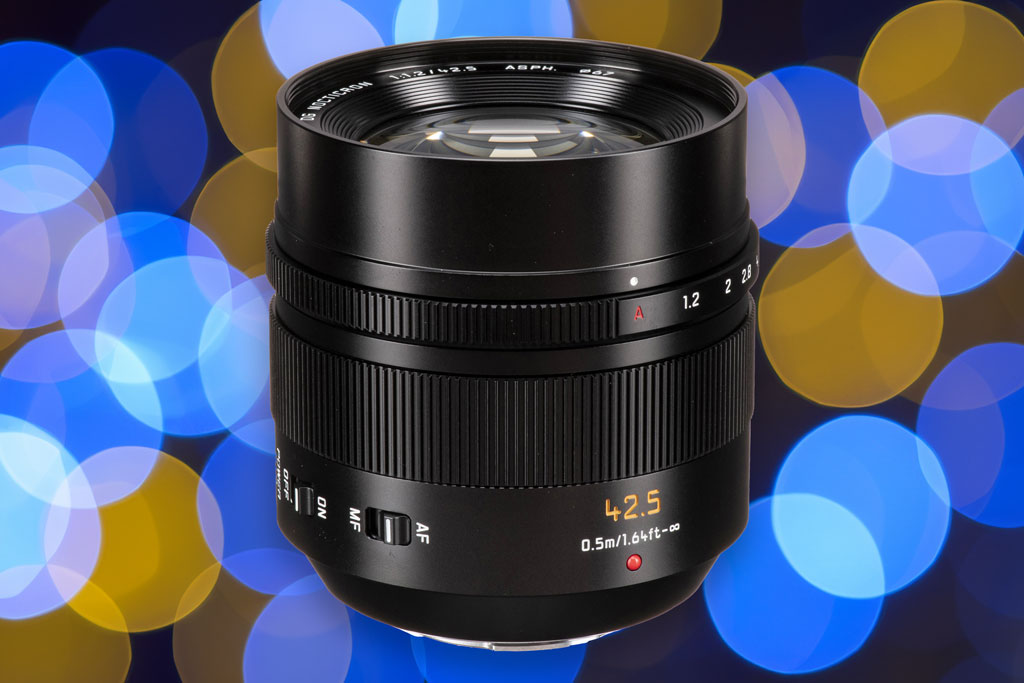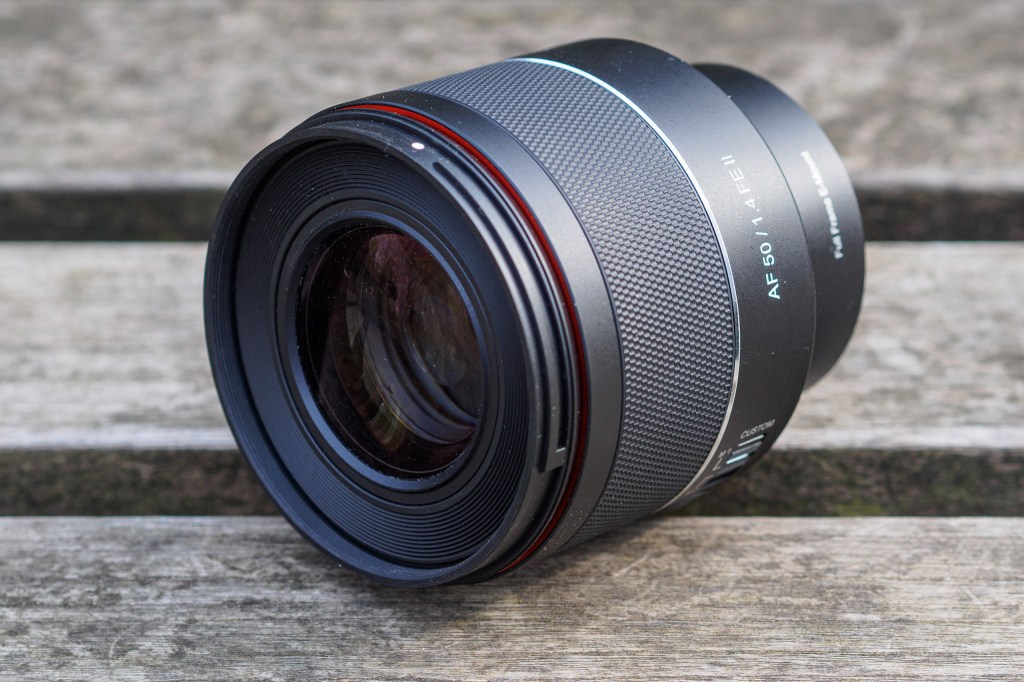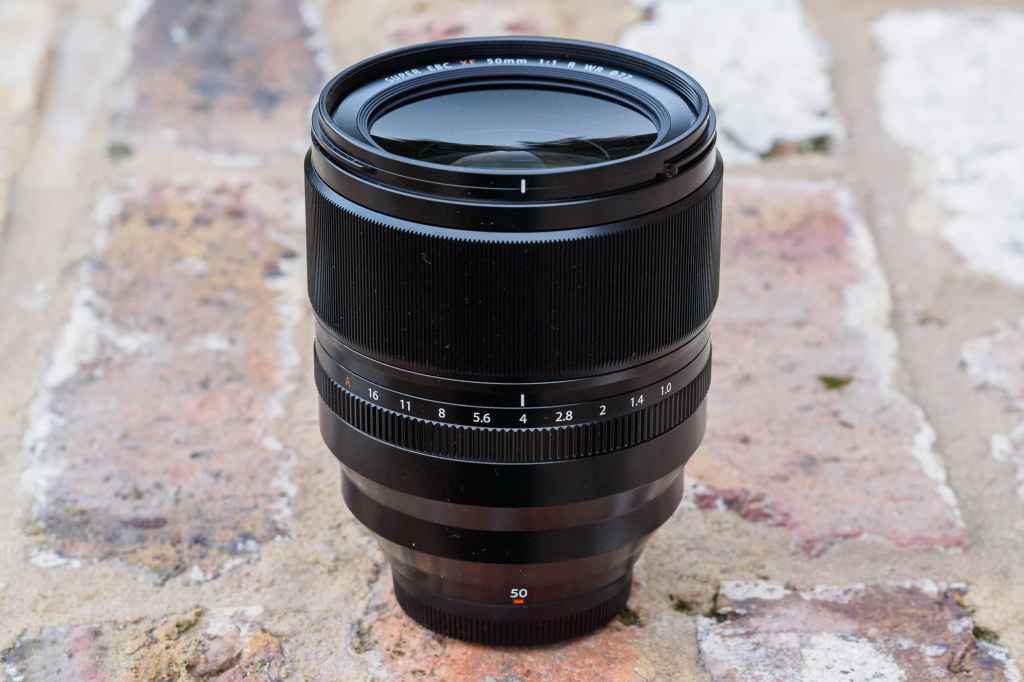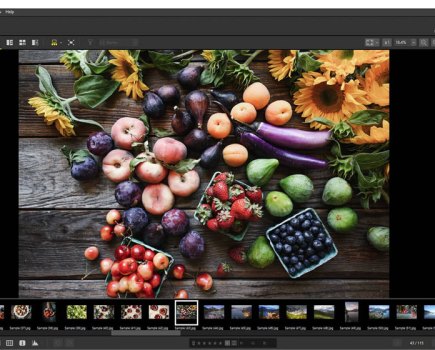How do you get that lovely, creamy background blur in your photos? Rod Lawton identifies the best lenses for great bokeh and background blur.
Best lens types for bokeh
The best lenses for bokeh are wide-aperture prime lenses, usually of longer focal lengths. Our guide picks out four main types:
- 50mm lenses: Every camera maker has a 50mm prime lens in its line-up, and often more than one. The classic ‘standard’ lens, a 50mm prime can be an affordable entry point to prime lens photography or an exotic, ultra-fast lens capable of spectacular quality.
- 85mm lenses: Portrait photography is a genre where background/foreground blur is highly sought after and ‘good’ bokeh is important. 85mm is the ‘classic’ focal length for portraits because it means you stand that little bit further away, which generates more flattering facial perspectives.
- 100-135mm lenses: Longer focal length prime lenses can be even better for portraits because the depth of field from them is even more shallow. They can also be useful as short telephoto lenses, and wide maximum apertures help separate subjects from their surroundings.
- Vintage/art lenses: These are becoming very popular and are often not too expensive. They achieve blur and bokeh in a different way, using the characteristics of older or cheaper lens designs to create a ‘vintage’ or ‘dreamy’ look. They can be tricky to use, though, and are not for everyone.
The best lenses for bokeh – our quick list
Looking for the best deal on lenses with beautiful bokeh? Not only will you find the best lenses for bokeh, but also some of the best deals, as our ‘Buy now’ buttons are setup to automatically take you to the best prices from trusted retailers. You’ll also find a list of other retailers below each lens, so you can find the right deal for you.
- Best Canon for bokeh: Canon RF 50m F1.8 STM – Buy now
- Best Sigma portrait lens for bokeh: Sigma 85mm F1.4 DG DN Art – Buy now
- Best MFT lens for bokeh: Olympus M.Zuiko Digital ED 25mm F1.2 Pro – Buy now
- Best Nikon portrait lens for bokeh: Nikon Nikkor 135mm F1.8 Plena – Buy now
- Best Sony portrait lens for bokeh: Sony FE 135mm F1.8 GM – Buy now
- Best Sony lens overall for bokeh: Sony FE 50mm F1.2 GM – Buy now
- Best APS-C lens for bokeh: Sigma 56mm F1.4 DC DN – Buy now
- Best Nikon lens overall for bokeh: Nikon Nikkor Z 85mm f/1.2 S – Buy now
- Best Fujifilm portrait lens for bokeh: Fujifilm XF 56mm F1.2R WR – Buy now
- Best third-party portrait lens for bokeh: Samyang AF 75mm F1.8 X – Buy now
- Best MFT portrait lens for bokeh: Panasonic Leica DG 42.5mm F1.2 Nocticron OIS – Buy now
- Best third-party lens for bokeh: Samyang AF 50mm F1.4 FE II – Buy now
- Best Fujifilm lens overall for bokeh: Fujifilm XF 50mm F1.0 R WR – Buy now
Why you can trust Amateur Photographer
We spend many hours testing every product we recommend, in detail, in a variety of situations and shooting scenarios, and only use experts for our reviews, so you can be sure that you’re getting the best products. Find out more about our expert writers.
Best Canon lens for bokeh: Canon RF 50mm F1.8 STM
- Price: $199 / £209
- Mount: Canon RF
- Min focus distance: 0.3m
- Filter thread: 43mm
- Weight: 160g
Canon makes a great selection of wide-aperture lenses. While some of its best lenses for bokeh are very expensive, like the RF 85mm f/1.2 portrait lens, there are many cheaper ‘consumer’ lenses. The Canon RF 50mm F1.8 STM is the cheapest of all.
Many camera makers offer a cheap ‘nifty fifty’ and they often deliver very good optical quality for the money – especially this one. It’s designed for Canon’s full frame EOS R cameras, but can also be used on its APS-C models, where it offers a focal length of 75mm equivalent, so it could be a perfect low-cost ‘portrait’ lens for these cameras.
The Canon RF 50mm F1.8 STM is very compact and light, but still has room for Canon’s trademark customisable control ring, which can also be used for manual focusing. It has stepping motor autofocus which is not completely silent but is still quick and smooth to focus.
The image quality is extremely good for a lens of this price. There is some edge softness and vignetting wide open, but this can add to the character, and while the 7-bladed diaphragm doesn’t produce perfectly circular bokeh, this lens still produces very attractive out-of-focus blur.
Read our review of the Canon RF 50mm F1.8 STM here
Best Sigma portrait lens for bokeh: Sigma 85mm F1.4 DG DN Art
- Price: $1,089 / £979
- Mount: Sony FE, L-Mount
- Min focus distance: 0.85m
- Filter thread: 77mm
- Weight: 625g
Once known as a maker of budget third-party lenses, Sigma’s transition to its ‘global vision’ range has brought far higher levels of build and optical quality to match. At times they even exceed the performance of own-brand camera lenses.
The Sigma 85mm F1.4 DG DN Art is a full-frame ‘portrait’ lens designed specifically for mirrorless cameras; notably the Sony Alpha models but also Panasonic, Leica and Sigma L-Mount cameras. It has a sophisticated optical construction and an 11-bladed rounded diaphragm for perfectly circular bokeh highlights. It even has a physical aperture ring.
The performance wide open at f/1.4 is remarkable, and the lens also offers excellent features for its price. It is dust and splash proof, and comes with a locking lens hood. On the downside, there’s no focus distance scale, though most users would rely on autofocus or focus manually in the viewfinder.
85mm f/1.4 is considered a classic ‘portrait’ focal length. You can also use this lens on APS-C cameras, where its effective focal length will be around 128mm.
Read our review of the Sigma 85mm F1.4 DG DN Art here.
Best MFT lens for bokeh: Olympus M.Zuiko Digital ED 25mm F1.2 Pro
- Price: $1,400 / £1,199
- Mount: MFT
- Min focus distance: 0.3m
- Filter thread: 62mm
- Weight: 410g
Olympus/OM System cameras use the Micro Four Thirds format, which is smaller than both APS-C and full frame. This means you use shorter focal length lenses to achieve the same angles of view, and these shorter focal lengths make for more depth of field. It is harder, then, to get shallow depth of field effects with these cameras – but by no means impossible. The 25mm focal length sounds wide, but on these cameras it’s equivalent to a 50mm lens in full frame terms.
The Olympus M.Zuiko Digital ED 25mm F1.2 Pro shows how it’s done, with a super-fast f/1.2 maximum aperture that can deliver strong background and foreground blur. Better still, it’s specifically designed for beautiful ‘feathered bokeh’ with an optical construction that delivers a carefully controlled level of spherical aberration at wide apertures – spherical aberration is not great for resolution but can deliver beautiful bokeh.
This is one of Olympus/OM System’s Pro lenses, so its build and handling are exemplary. It has a rapid manual focus ‘clutch’ mechanism complete with a distance scale. It’s also weather-resistant so it can be used outdoors in bad weather.
Read our review of the Olympus M.Zuiko Digital ED 25mm F1.2 Pro here.
Best Nikon portrait lens for bokeh: Nikon Nikkor 135mm F1.8 Plena

Amateur Photographer verdict
A superb lens for portraits and similar subjects, with the finest optical excellence you can buy. However, it’s less flexible than an 85mm portrait lens, and it’s also hugely expensive.- Beautiful bokeh
- Superb sharpness
- Best optical excellence
- High price
- Big and heavy
At a glance:
- Price: $2,497 / £2,469
- Mount: Nikon Z-mount
- Min focus distance: 82cm
- Filter thread: 82mm
- Weight: 995g
The Nikon 135mm F1.8 Plena is a lens for Nikon’s mirrorless Z-mount. It is constructed to give perfectly rounded bokeh throughout the whole frame at maximum aperture, not to mention its incredibly sharp. However, it is also very expensive.
With 16 elements in 14 groups, it is designed to suppress ghosting, reflections flare and other issues. Furthermore the 11 diaphragm blades help create that perfectly rounded bokeh we are all looking for.
It is ideal not just for portrait photography but also for still-life, close-ups and other subjects where you want to focus on fine details. Even though it is not a dedicated macro lens it offers 0,2x magnification, which paired with a minimum focusing distance of 82mm will help you create stunning close-ups of macro-type subjects, like flowers or food.
The internal multi-focusing mechanism delivers fast and accurate autofocus, all the while being quiet, making it ideal for video work too. The Plena is undoubtedly a superb lens, however quite heavy. I would recommend pairing it with full-frame Nikon Z body like the Nikon Z8 or Nikon Z9, but you can get away with the smaller Nikon Z6III or Nikon Z7II too.
Read our full review of the Nikon Nikkor 135mm F1.8 Plena.
Best Sony portrait lens for bokeh: Sony FE 135mm F1.8 GM
- Price: $2,098 / £1,599
- Mount: Sony FE
- Min focus distance: 0.7m
- Filter thread: 82mm
- Weight: 950g
Sony users looking for the best lenses for bokeh are spoilt for choice, and the Sony FE 135mm F1.8 GM is one of the best. Longer focal length lenses have shallower depth of field, and the 135mm focal length, in combination with the f/1.8 maximum aperture, can deliver razor sharp focus and very strong foreground and background blur.
But this lens is also designed to produce attractive bokeh, and it achieves this with an optical design that includes a high-precision XA lens element (a feature of Sony G Master lenses) and super ED (extra low dispersion) and ED elements. It also has a rounded 11-blade diaphragm designed for perfectly circular bokeh.
Big, fast prime lenses like this are not always quick to focus, but the FE 135mm F1.8 GM uses powerful XD Linear Motor actuators for autofocus that’s both fast and accurate.
Unfortunately, Sony’s legendary G Master optics don’t come cheap. G Master lenses are also designed for performance ahead of compactness, so this is also a pretty big lens to handle.
Read our review of the Sony FE 135mm F1.8 GM here.
Best Sony lens overall for bokeh: Sony FE 50mm F1.2 GM
- Price: $1,898 / £2,099
- Mount: Sony FE
- Min focus distance: 0.4m
- Filter thread: 72mm
- Weight: 778g
50mm lenses are often the most affordable in a camera maker’s line-up, but they can also be the most expensive and exotic – which perfectly describes the Sony FE 50mm F1.2 GM. It’s designed for Sony’s full frame cameras, but could also be used on its APS-C mirrorless models, where it would offer an effective focal length of 75mm.
The FE 50mm F1.2 GM is designed both for super-shallow depth of field, with that f/1.2 maximum aperture, and for beautiful bokeh, which is achieved with a rounded 11-blade diaphragm. We found it delivered wonderful “painterly” bokeh, though occasionally some bokeh fringing around defocused outlines. It’s also spectacularly sharp, even wide open at f/1.2.
Sony has used its powerful XD Linear AF motors in this lens, so despite its size it’s very quick to focus. It also has a physical aperture ring which can be ‘declicked’ for silent and stepless iris adjustments while filming, and a Focus Hold button. Sony’s G Master lenses have the best optics and the most advanced design and features in the Sony lens range, and you certainly get that here – hence the price.
Read our review of the Sony FE 50mm F1.2 GM here.
Best APS-C lens for bokeh: Sigma 56mm F1.4 DC DN
- Price: $479 / £419
- Mount: Sony E, Nikon Z, Fujifilm X, L-Mount, Canon M, MFT
- Min focus distance: 0.5m
- Filter thread: 55mm
- Weight: 280g
The Sigma 56mm F1.4 DC DN is an APS-C format lens, so is not designed for full frame cameras. This does make it both cheaper and lighter than full frame lenses, and it’s available in a whole range of APS-C camera mounts. It’s great to see APS-C cameras getting high-quality, high-performance prime lenses too. The 56mm focal length on APS-C is equivalent to an 85mm lens on a full frame camera, so this is the ideal ‘portrait’ lens for these cameras.
The Sigma uses a rounded 9-blade diaphragm to make bokeh highlights as circular as possible and an optical construction that includes one SLD (special low dispersion) and two aspherical elements for optical quality. The stepping motor autofocus is fast and quiet, and this lens has a weather-sealed construction too.
Used wide open, it does deliver nice circular bokeh highlights in the centre of the frame, but a cat’s eye bokeh effect towards the edges – though this disappears when you stop the lens down. All in all, this is a terrific lens for bokeh fans with APS-C format mirrorless cameras.
Read our review of the Sigma 56mm F1.4 DC DN here.
Best Nikon lens overall for bokeh: Nikon Nikkor Z 85mm f/1.2 S
- Price: $2,597 / £2,819
- Mount: Nikon Z
- Min focus distance: 0.85m
- Filter thread: 82mm
- Weight: 1,160g
The Nikkor Z 85mm f/1.2 S is one of Nikon’s flagship ‘bokeh’ lenses. It has the classic 85mm ‘portrait’ focal length but a faster than usual f/1.2 maximum aperture. It comes with a dual STM autofocus system, a control ring and function button and has extensive weather seals.
This is a big lens, thanks mostly to that f/1.2 maximum aperture. It is also exceptionally sharp, with an optical construction that uses two aspherical and one ED (extra low dispersion) element. More importantly it delivers beautiful bokeh with deliciously smooth out of focus areas. You don’t just get superb optical performance, you get the quality of blur that buyers will be expecting at this price.
This is a very expensive lens. It’s aimed at professional portrait photographers who want the best and most beautiful results, whatever the cost. It’s also very big and heavy, weighing in at over 1kg, or nearly 2lb. You could use it on one of Nikon’s smaller APS-C cameras to get an effective focal length of 128mm, but its size and cost would make this a complete mis-match – this lens is for professional users with full frame Nikon Z cameras.
Read our review if the Nikon Nikkor Z 85mm f/1.2 S here.
Best Fujifilm portrait lens for bokeh: Fujifilm XF 56mm F1.2R WR
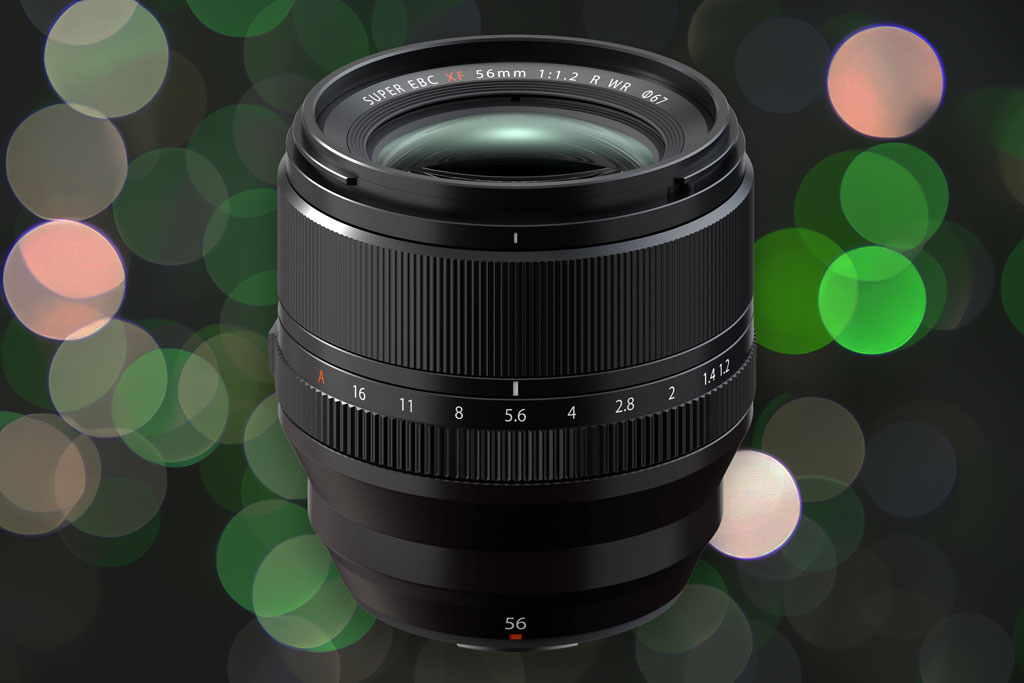
- Price: $999 / £999
- Mount: Fujifilm X
- Min focus distance: 0.5m
- Filter thread: 67mm
- Weight: 445g
The Fujinon XF 56mm F1.2R WR is Fujifilm’s equivalent of a classic portrait lens for its APS-C X-mount cameras, where it offers an effective focal length of 85mm and that extra-fast f/1.2 maximum aperture. This will give background and foreground blur roughly equivalent to an 85mm f/1.8 lens on a full frame camera, but in a smaller, lighter and cheaper package.
The XF 56mm F1.2R WR has a rounded 11-blade diaphragm for properly circular bokeh and two aspherical elements in its optical construction, all of which helps produce beautiful, rounded bokeh and a very natural looking drop-off in out of focus areas.
The only slight issue with this lens is a rather audible autofocus system, and there’s no optical stabilisation – though this is often the case with fast prime lenses, and newer Fujifilm cameras have in-body stabilisation anyway.
This lens is certainly a cheaper alternative to the exotic Fujifilm XF 50mm F1.0 R WR, and probably more practical for the average portrait photographer too.
Best third-party APS-C lens for bokeh: Samyang AF 75mm F1.8 X
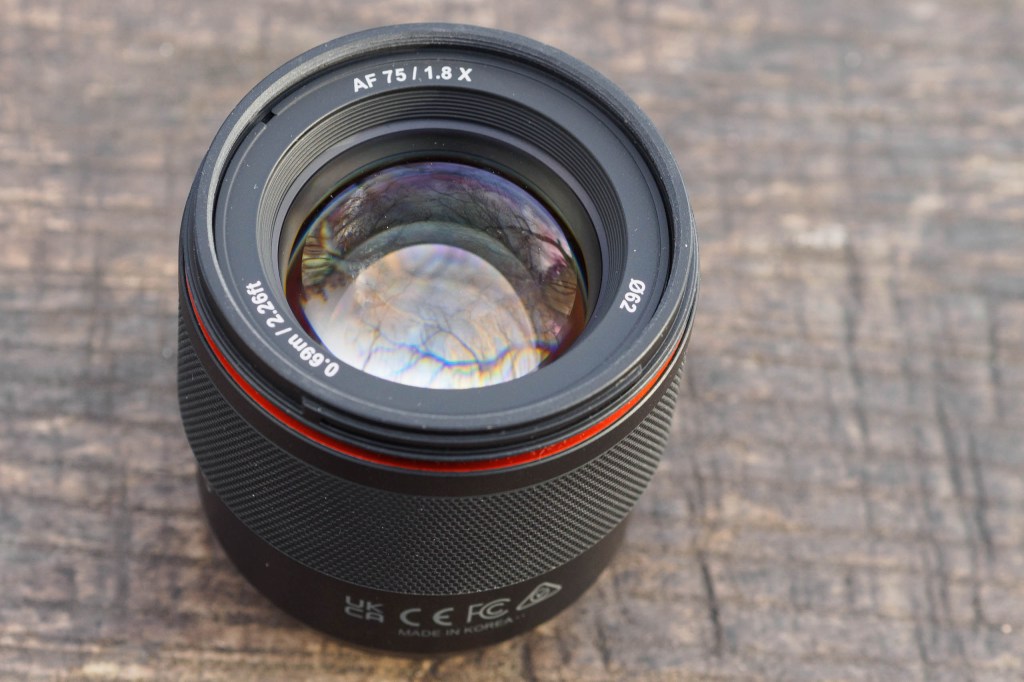
- Price: $399 / £399
- Mount: Fujifilm X (Sony E version available)
- Min focus distance: 0.69m
- Filter thread: 62mm
- Weight: 257g
Samyang has long been a producer of well-regarded low-cost manual focus lenses but has recently started producing autofocus lenses for selected cameras. This version is for Fujifilm X-mount cameras but it’s also available for Sony E.
It’s an APS-C lens, and on an APS-C camera its 75mm focal length gives the effective angle of view of a 112.5mm lens on a full frame camera. This makes it ideal for longer portrait shots and even as a short telephoto lens.
The fast f/1.8 aperture offers strong foreground and background blur, and while this lens’s 9-bladed diaphragm isn’t quite as round (in theory) as 11-blade lenses, it does nevertheless produce lovely smooth bokeh in blurred areas.
It’s also very good value for money, it’s compact and light and has weather sealing too, though there’s no physical aperture ring and despite the use of a Linear STM stepping motor the autofocus is somewhat sluggish in continuous AF mode. But still, at this price, it’s an excellent performance overall.
Read our full review of the Samyang AF 75mm F1.8 X here.
Panasonic Leica DG 42.5mm F1.2 Nocticron OIS
- Price: $1,298 / £1,149
- Mount: MFT
- Min focus distance: 0.5m
- Filter thread: 67mm
- Weight: 425
Portrait lenses for Micro Four Thirds cameras need to have extra-wide maximum apertures to get strong foreground and background blur, and that’s exactly what you get with the Panasonic Leica DG 42.5mm F1.2 Nocticron OIS. The 42.5mm focal length equates exactly to the 85mm focal length on a full frame camera, and the f/1.2 maximum aperture gives very shallow depth of field, which is just what you want from a ‘bokeh’ lens.
The other half of the bokeh equation is how well the lens renders out-of-focus areas, and this one does brilliantly, thanks to a combination of exotic aspherical, ED and UHR lens elements and a rounded 9-bladed aperture. Out of focus highlights are rendered beautifully as round discs, with minimal chromatic aberration or colour fringing.
This lens is produced in partnership with Leica, so it has Leica’s trademark minimalist aesthetics, and it also sports a physical aperture ring, which is unusual in Micro Four Thirds lenses. There’s also an optical image stabiliser built in.
Read our review of the Panasonic Leica DG 42.5mm F1.2 Nocticron OIS here.
Best third-party lens for bokeh: Samyang AF 50mm F1.4 FE II
- Price: $549 / £599
- Mount: Sony FE
- Min focus distance: 0.4m
- Filter thread: 72mm
- Weight: 420g
The Samyang AF 50mm F1.4 FE II offers advanced specifications in a full frame lens at a very affordable price. This Sony version even has autofocus – a relatively new feature for Samyang – though its Linear STM motor isn’t quite as quick as rival lenses.
The optics consist of 11 elements in 8 groups, including three HR (high refractive), one ED (extra low dispersion) and two aspherical elements. This delivers impressive levels of sharpness right across the frame, though there is sometimes some visible longitudinal chromatic aberration, or ‘bokeh fringing’ which may not be easy to get rid of in software.The good news is that there is barely any ‘focus breathing’, which is an unwanted effect in some lenses where the magnification appears to change slightly as you change focus.
You do get a lot for your money with this lens, including a 9-bladed diaphragm for better bokeh, a customisable control/focus ring and weather-resistant construction, though you don’t get a physical aperture ring. For this you would need to look at some of Sony’s own prime lenses, for example.
Read our review of the Samyang AF 50mm F1.4 FE II here.
Best Fujifilm lens overall for bokeh: Fujifilm XF 50mm F1.0 R WR
- Price: $1,499 / £1,469
- Mount: Fujifilm X
- Min focus distance: 0.7m
- Filter thread: 77mm
- Weight: 845g
The headline feature of the Fujifilm XF 50mm F1.0 R WR is, of course, its f/1.0 maximum aperture. F/1.2 lenses are becoming relatively common now, but apertures of f/1.0 and faster are still rare, and often extremely expensive.
That’s where the XF 50mm F1.0 R WR is different. It’s expensive by normal prime lens standards, but it’s in the same ballpark as other fast professional primes
The image quality is everything you could hope for. Its resolution and contrast is good, even wide open, and it produces highly attractive images with gorgeous bokeh. There is some cat’s eye bokeh at the edge of the frame wide open, but stopping down to f/2 fixes that, and at apertures of f/4 or f/5.6 give impressive sharpness.
This is, however, a big and heavy lens. It’s a lot larger and more expensive than the Fujinon XF 56mm f/1.2, which is almost as capable. The autofocus is not the fastest or quietest, either. Even so, the Fujifilm XF 50mm F1.0 R WR is a very rare thing – a truly affordable and usable ultra-fast ‘bokeh’ lens.
Red our review of the Fujifilm XF 50mm F1.0 R WR here.
Related reading:

